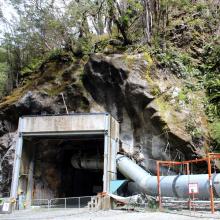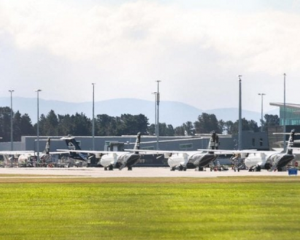
On November 19, 2010, an explosion at the mine was reported about 3.44pm. Only two people walked out of the mine that day - 29 people were unaccounted for.
Five days later a second explosion occurred about 2.37pm, and the police stated they believed no-one could have survived.
It was the worst mining disaster since the death of 43 miners in the Ralph Mine explosion in 1914.
Pike River Recovery Agency chief operating officer Dinghy Pattinson is leading the work underground.
He said miners were, as of Monday, 2146m inside the main mine tunnel, and less than 100m away from the Rocsil plug, 10.3m of expanding foam that was pumped down a borehole in late 2019.
It expanded to 35 times its original size to fill the entire width and height of the tunnel.
The plug kept oxygen out of the areas beyond - the last 8m of the drift (the main mine tunnel), roof fall (an area of tunnel that collapsed in following the explosion), and the mine workings (4.3km of tunnels where the coal was extracted and where the remains of the 29 miners are expected to be).
Mr Pattinson said the lack of oxygen meant the miners would have to wear breathing apparatus as they tunnelled through the plug.
‘‘You can get four hours out of that breathing set, when we do that work, we want less than 2% oxygen in the tunnel so we have to wear to breathing apparatus,’’ he said.
To practise operating with no oxygen, a shipping container had been pumped full of the same foam on the surface, miners ‘‘tunnelling’’ through it wearing the breathing apparatus.
After building a concrete wall with an airlock to replace the plug, Mr Pattinson expects to have tunnelled through the plug and reached the roof fall by Christmas.
‘‘We will have to do the full forensic examination on behalf of the police.
‘‘It will be treated just like the rest of the tunnel, the only difference is we will be doing it in breathing apparatus,’’ he said.

That area contained electrical and water equipment - all potential clues that could shed light on what happened underground 10 years ago leading to the explosion.
‘‘It’s 10 years since the disaster and there are still 29 men in the mine itself and far beyond 29 families who hurt to this day,’’ Pike River Recovery Agency chief executive Dave Gawn said.
‘‘People have not been held to account and certainly it is common acceptance the mine, in some aspects, was not well run, particularly around health and safety.’’
Accountability is something families of those who died had been calling for for years.
About $110,000 was offered to each family by former Pike River Coal chief executive Peter Whittall and the company’s directors after 12 health and safety charges against Mr Whittall were dropped in 2013.
‘‘If the evidence is able to meet the threshold for the legal case then, absolutely, people should be held to account in the courts,’’ Mr Gawn said.
Mr Pattinson agreed.
‘‘Hopefully, somebody will be held to account because 29 people died that day.’’
Attempts to contact Peter Whittall, who now runs Illawarra Diggers, a rest-home in Wollongong, New South Wales, were unsuccessful.
Despite about three months of delays at the mine due to Covid-19 as well as other unforeseen factors, including the discovery of carcinogens in August 2020 that briefly halted work, the end was in sight.
Miners and police would work to forensically examine Pit Bottom in Stone, before withdrawing from the mine completely and handing the site over to the Department of Conservation.
Mr Gawn said the agency would be ‘‘downsizing’’ in the New Year, with the current two shifts a day and night a being cut down to one.
He said he had not been involved in any discussion about extending the agency’s mandate to only recover the drift — the mine workings at this stage would not be searched, which some families had been called for.
More than 100 relatives and friends of those who died are expected to gather on the West Coast today.
They will first visit the Atarau memorial, just down the road from the mine itself.
They will then travel to the mine portal where, at 3.44pm, they will stand in silence for one minute before listening to a rollcall of the 29 men.
A memorial service will be held at Blackball later.
A service will also be held in Wellington, which Prime Minister Jacinda Ardern, Pike River Recovery Minister Andrew Little and other dignitaries are expected to attend.
- By Logan Church
Comments
Hopefully the Pike River families will get some form of closure from this attempt to find evidence. Tragically their loved ones may never be recovered but at the least they and this Govt have tried.












